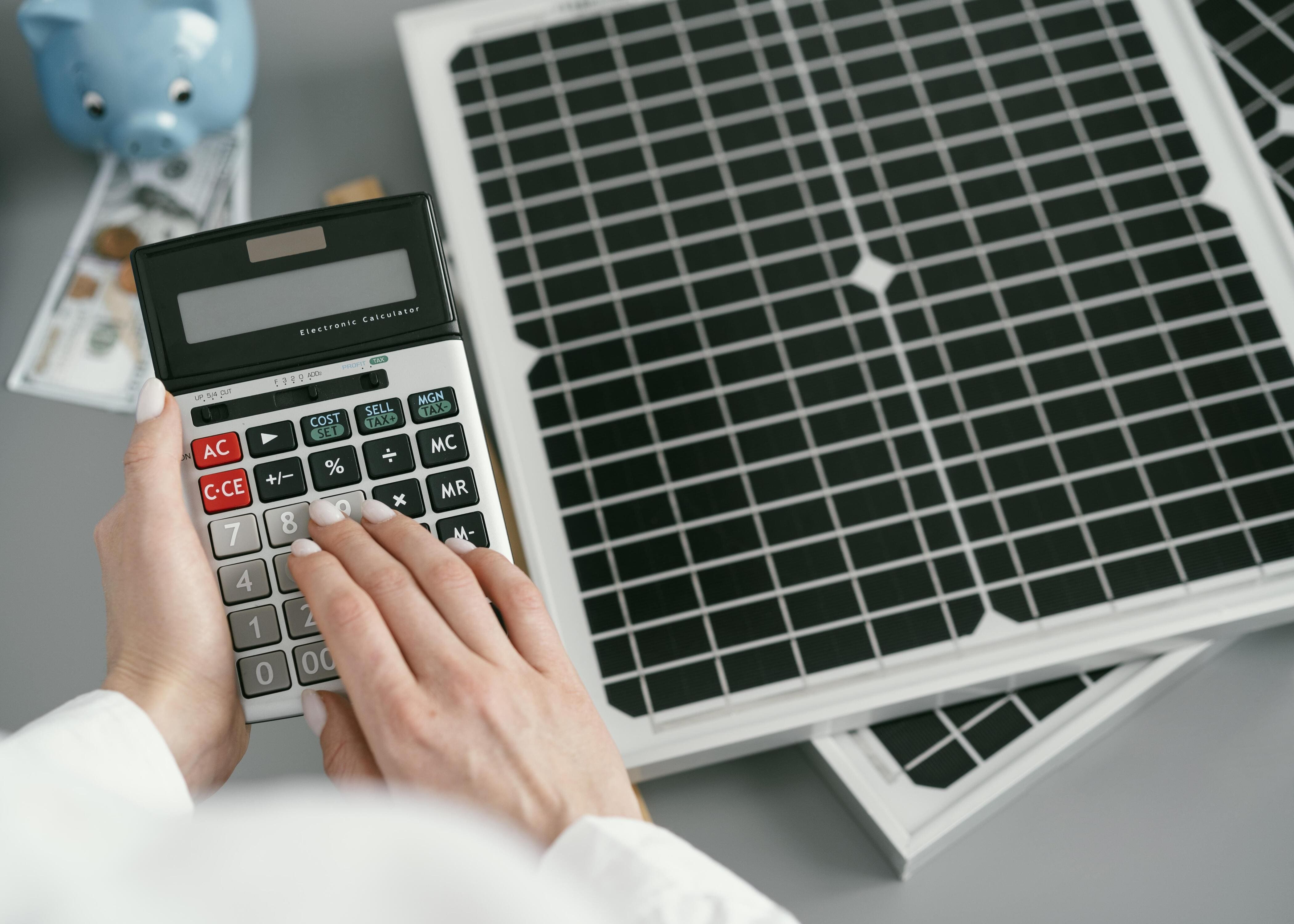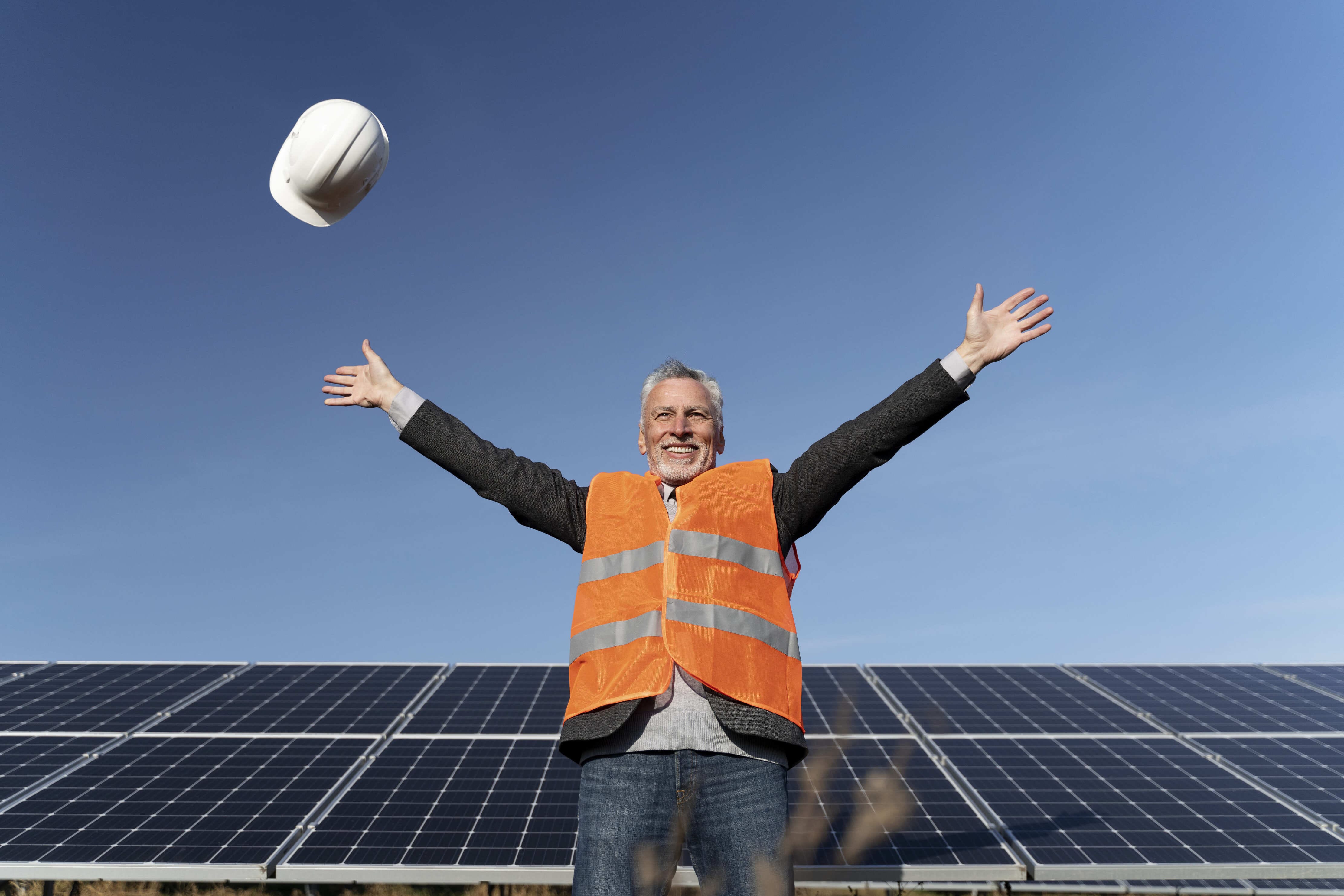

A home solar system costs between $25,000 and $45,000 before incentives in 2025, or $17,500 to $31,500 after the 30% federal tax credit. The average 2,000 sq ft home needs 14-17 solar panels costing approximately $15,000-$20,000 for equipment alone.
Installing solar panels on your home can dramatically reduce your electricity bills and boost your energy independence, but it comes with a substantial initial price tag. Although the upfront expenses are considerable, your solar investment begins generating returns immediately once the system becomes operational.
Key cost factors include:
Most homeowners see payback periods between 6-10 years, with total lifetime savings ranging from $10,000 to $30,000+. Let's break down the actual costs of home solar installation in 2025.

The typical residential solar installation in the United States, covering both equipment and labor, ranges from $25,000 to $45,000 in 2025 before any incentives are applied. This estimate varies based on system capacity, geographic location, and contractor pricing.
After applying the 30% federal solar tax credit, these figures can decrease significantly. Keep in mind this is just your baseline. Variables like home dimensions, roof condition, panel selection, and battery backup systems will substantially affect your final expenses.
Solar pricing is inherently individualized, making personalized quotes essential for determining your actual costs. For expert assistance with residential solar design and accurate system sizing, professional consultation can help optimize your investment. Alternatively, if you're considering a do-it-yourself approach, calculating your required system capacity is the best starting point.
A home solar installation encompasses more than just mounting panels on your roof. The process includes choosing appropriate components, evaluating your household's energy requirements and confirming your system can fulfill them, coordinating with contractors (or handling it yourself), and navigating local building codes and permit requirements.
Equipment and installation labor represent your two largest expenses. While taking the DIY route can eliminate labor costs, it demands considerably more time and technical knowledge.
Let's explore the essential equipment and how professional installation affects your overall budget.
Breaking down each element required for a functional solar system helps clarify where your investment goes.
Panels form the foundation of every solar installation and typically represent approximately 12% of total system costs. Current 2025 pricing sits between $2 and $3 per watt, influenced by efficiency ratings, manufacturer, and warranty coverage. A standard 6 kW installation might require $15,000 solely for the panels. The IEEE Power & Energy Society provides technical standards and research on renewable energy technologies.
Inverters are essential for utilizing the electricity your solar array produces. These devices transform DC electricity (generated by your panels) into AC electricity (compatible with your home). Quality inverters cost $1,000-$2,500, depending on the model you select.
String inverters consolidate DC power from all panels at one central point for conversion, while microinverters handle the DC-to-AC conversion at each individual panel. Hybrid versions integrate an inverter with a charge controller system, making them perfect for battery storage configurations.
Racking and mounting hardware secure your solar panels and position them at optimal angles. Budget $500-$2,000 for roof-mounted installations or $2,000-$4,000 for ground-mounted arrays. According to structural engineering guidelines, proper mounting system design is critical for panel performance and safety. While mounting systems comprise only about 3% of total expenses, costs can accumulate for larger installations.
Energy storage for backup power during outages or off-grid living requires a solar battery ranging from $3,000 to $20,000, installation included. Complete home backup may necessitate multiple batteries. Battery storage frequently becomes the single largest expense. However, it delivers the greatest value and enables you to fully leverage your solar investment.
Battery storage is also mandatory for off-grid systems, since you'd otherwise depend on utility grid power to operate your system. Off-grid setups require batteries with sufficient capacity to power your entire home, with expandable options offering up to 12kWh capacity with additional battery units.
Professional installation labor generally costs $3,000 to $10,000, varying with system size, roof angle and structure, and regional wage rates. These charges typically encompass electrical work, permit acquisition, and required inspections.
Handling solar installation yourself can trim several thousand dollars from your budget but involves important compromises. You'll require electrical expertise, proper permits, and inspections, and you might forfeit warranties that accompany professional installations. Licensed installers bring proven expertise and guarantee compliance with all building regulations, saving you considerable time and potential problems.
Keep in mind: self-installation still requires these separate tools and expenses:
Without substantial experience, professional installation typically justifies the additional investment. Understanding what happens if you install solar panels without a permit can help you avoid costly violations and safety issues. Resources like SolSmart's permitting guide provide valuable information on construction codes and inspection requirements.

The figures above serve as estimates, and each home's solar installation cost will differ. Every project varies in size, location (including regional pricing), energy generation, roof dimensions and construction, panel varieties, and battery storage.
While you can't control every factor, understanding their cost impact helps you identify the main expense drivers.
Although not absolute, your home's square footage generally correlates with electricity consumption. Larger residences demand more power for climate control, appliances, and lighting, requiring additional solar panels to satisfy energy needs. Larger systems cost more initially but can offset higher monthly utility expenses, producing greater long-term savings. Conversely, smaller homes need fewer panels and may achieve faster payback periods, letting you recover your investment within just a few years.
Your geographic area influences both installation expenses and solar energy generation. Residents in sunny regions like Arizona, Florida, or Southern California will see higher electricity production per watt compared to cloudier locations like the Pacific Northwest, according to data from the National Centers for Environmental Information.
Labor and permitting expenses also fluctuate considerably between states. For instance, solar permits in Texas follow different requirements than other states. Understanding permit requirements across the United States helps you navigate regional variations. Areas with widespread solar adoption and competitive installer markets may offer lower prices for identical systems compared to markets dominated by limited installers. NYSERDA's Solar Guidebook offers state-specific insights for New York residents. Local cost of living and regulations additionally impact labor fees, permitting, and inspection costs. Urban areas typically command higher labor rates than suburban or rural regions, which can affect costs beyond just the panels themselves.
Higher electricity consumption requires greater system capacity to match or offset your usage. Homes with electric vehicles, heated pools, or large families typically have substantial energy demands requiring larger, more expensive solar installations.
Alternatively, homes with energy-efficient appliances and quality insulation might need fewer panels, lowering overall costs. The EPA's Green Power Markets program provides resources for understanding energy efficiency and renewable energy integration. Conducting an energy audit before solar installation helps you properly size your system and prevent overspending.
Your daily habits also influence energy consumption. Environmentally conscious households that switch off lights when leaving rooms, disconnect electronics when idle, adjust thermostat settings when away, and keep windows and doors closed will consume less energy than less conservation-focused families.
Habits represent a controllable factor. Therefore, if you're seeking to reduce solar costs, consider implementing lifestyle modifications to decrease your total required wattage.
Your roof's dimensions, configuration, pitch, and direction determine panel quantity, installation complexity, and performance efficiency. In the United States, an expansive, south-facing roof with a 30-45° pitch is optimal for maximizing sunlight capture.
Shaded roofs or multi-level designs make panel installation more challenging and potentially costlier. Under these circumstances, you might require specialized racking solutions, panel optimizers, or ground-mounted alternatives, all increasing your total system investment. Working with commercial solar design experts can help navigate complex roof configurations for larger properties. Local planning and zoning regulations may also impact your installation options.
Certain solar panels carry higher price tags but offer superior efficiency, enabling faster return on investment. Others cost less upfront, conserving cash initially, but deliver lower performance. The decision is yours.
Monocrystalline panels offer the longest lifespan, highest efficiency, and premium pricing. They typically cost $1.00 to $1.20 per watt. Polycrystalline panels are more affordable (approximately $0.90 to $1.00 per watt) but slightly less efficient, demanding more roof area for equivalent output. Thin-film panels see limited residential use due to reduced efficiency but remain viable for particular applications.
Pro Tip: High-efficiency panels can prove more economical long-term when roof space is limited or anticipated energy requirements increase.
When included, battery storage constitutes a substantial portion of system costs, frequently adding $3,000 to $20,000, depending on capacity and manufacturer.
Nevertheless, they're worthwhile. Batteries deliver critical advantages: storing surplus solar energy for use during blackouts, nighttime hours, or peak utility rate periods. In regions with time-of-use pricing, batteries can also minimize grid dependence when electricity costs peak.
If you're not prepared for a large residential battery system, consider smaller portable options with expandable 1-5kWh capacity that include bifacial portable solar panels, allowing you to transport your generation and power capabilities wherever needed.
While not mandatory for every homeowner, battery storage is vital for those pursuing energy independence, blackout protection, or off-grid living. Many states provide battery incentives, either bundled with solar programs or available separately, which can offset the additional expense.
Factoring in all system components (panels, inverter, mounting equipment, installation costs, permits, etc.), a complete residential solar system will cost between $25,000 and $40,000 in 2025.
This figure excludes savings from solar incentives but also doesn't include battery storage if you choose to add it.
Ultimately, solar represents an investment, not an expense. The substantial upfront costs diminish rapidly through monthly electricity bill savings. With an off-grid system featuring battery storage, you might eliminate your bill entirely! Eventually, you'll recover your investment and continue saving.
As of 2025, the federal Investment Tax Credit (ITC) provides 30% for residential installations. You can subtract 30% of your solar installation expenses (including battery storage) from your federal taxes. For a $20,000 system, that equals a $6,000 credit. Higher spending means greater savings.
State and local programs can further reduce your expenses. These may include:
Consult your state's energy office or DSIRE database for current state incentives covering renewable and efficiency improvements in your region. The Solar Energy Industries Association maintains comprehensive information about available incentives nationwide.

Compare multiple quotes: Consult several installers and evaluate proposals to secure the best value. Solar Permit Solutions offers professional assistance to streamline your project from design through approval.
Choose the right system size: Avoid purchasing excess capacity unless you have concrete plans for increased energy consumption (electric vehicle purchase, pool heater installation, expanding household size).
Buy during off-season sales: Winter often presents excellent opportunities for discounts.
Bundle battery storage with solar: To maximize your system and qualify for larger incentives, incorporate battery storage in your proposals.
Check warranties carefully: Longer coverage is preferable. Verify whether your installer provides warranties beyond manufacturer guarantees.
Avoid unnecessary add-ons: Don't succumb to upselling pressure unless additions directly support your objectives.
Ask about financing options: If upfront expenses are prohibitive, explore alternatives like solar leases, loans, or power purchase agreements (PPAs). The World Bank's energy initiatives provide insights into financing mechanisms for renewable energy projects.
Maintain optimal panel efficiency: Ensure maximum performance and efficiency through quarterly or semi-annual cleaning and trim overhanging branches creating shade as necessary.
Ask about referral bonuses: If satisfied with your installer, inquire whether they provide incentives for referring friends or neighbors. This can help recover several hundred dollars while ensuring your contacts work with a trusted installer.
Buy American-made panels: Certain state or local programs provide additional rebates for purchasing domestically manufactured panels or other components. Learning how to streamline solar permit processing can also reduce overall project timelines and costs.

Most homeowners experience payback periods between 6 and 10 years. In sunny locations with elevated utility rates, you recover costs more quickly. Beyond that point, your system generates essentially free electricity, yielding $10,000 to $30,000+ in savings throughout the system's operational life.
Solar installation in 2025 can range from $20,000 to $45,000, depending on your configuration, location, and objectives. With substantial tax credits, increasing utility rates, and improving solar efficiency, it's becoming a more attractive investment annually.
Initial sticker shock when shopping for residential solar is normal. However, comprehensive understanding of all installation expenses and potential savings through incentives and free, long-term renewable energy helps reveal the genuine value of solar power. Capitalize on the savings and energy independence available now and begin enjoying the benefits. Explore our professional services to learn how we can assist with design and permitting, contact us for personalized guidance, or visit our blog for more solar installation insights.
How Many Years Can You Claim the Solar Tax Credit?
You can claim the solar tax credit only during the year your system was installed and became operational. The sole exception applies when your tax liability falls below your credit amount; under those circumstances, you can carry forward the credit and claim it once your tax liability exceeds your credit.
What Is the Solar Tax Credit for 2025?
In 2025, the federal solar tax credit in the US equals 30% of your total system cost, including equipment (and battery storage), labor, and permits/fees. Unless federal policy changes, current legislation extends through 2031. Resources from the American Solar Energy Society provide additional information about solar incentives and policies.
How Many Solar Panels are Needed To Run a 2000 Sq Ft House?
Most 2,000 square-foot homes consume approximately 900-1,200 kWh monthly. To satisfy this energy requirement, you'll need roughly 14-17 panels (assuming each panel produces around 400W under adequate sunlight conditions). Energy-intensive homes or those in areas with limited sunlight will require more panels.
Do Solar Panels Increase Home Value?
Yes, solar panels typically increase property value. Studies show that homes with solar installations sell for approximately 4% more than comparable homes without solar. Buyers are attracted to the prospect of reduced utility bills and energy independence. However, the value increase varies by location, with homes in areas that have high electricity rates and strong solar incentives seeing the greatest appreciation.
What Happens to Solar Panels During a Power Outage?
Standard grid-tied solar systems automatically shut down during power outages for safety reasons, preventing electricity from backfeeding into the grid and endangering utility workers. To maintain power during outages, you'll need a battery storage system that can disconnect from the grid and power your home independently. Some advanced inverters also offer backup capabilities when paired with batteries, allowing you to use your solar energy even when the grid is down. Understanding common solar permit mistakes and HOA regulations can help ensure your backup system meets all requirements.
We are dedicated to providing top-notch solar permit services to homeowners, business owners, DIY, and solar installers. Contact us today.